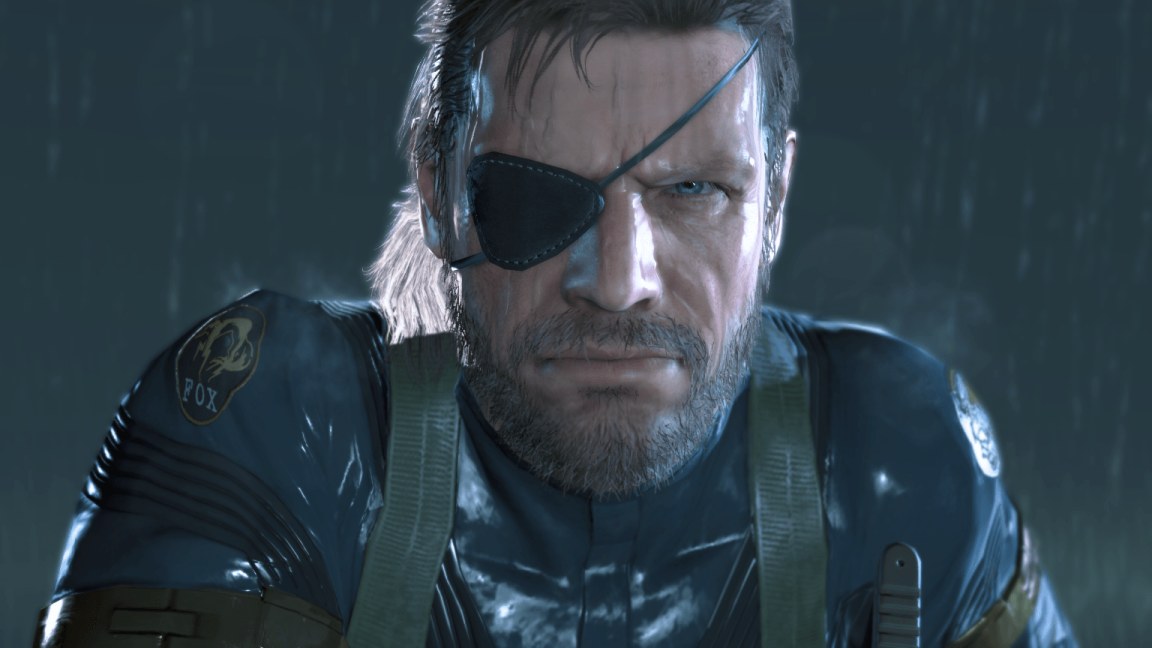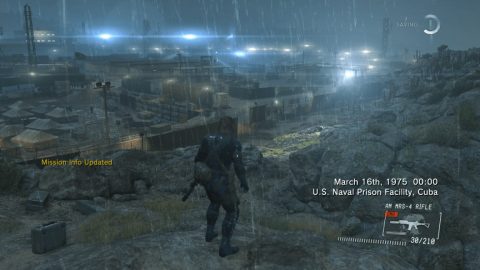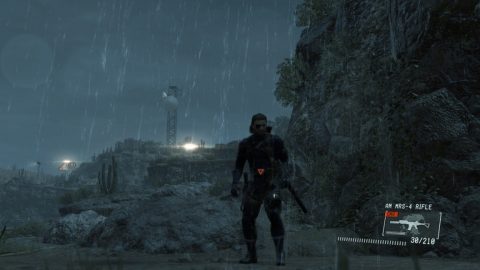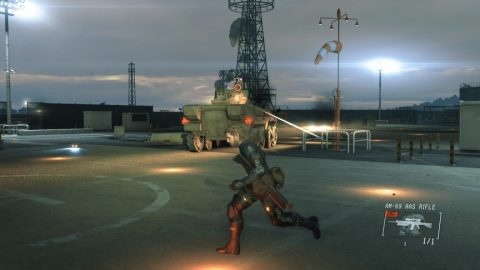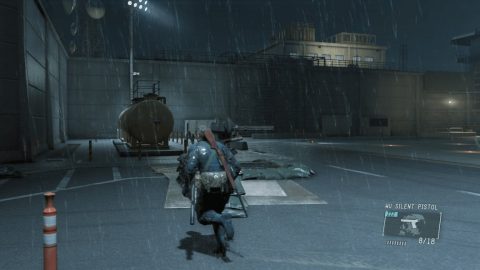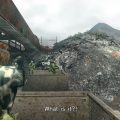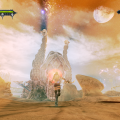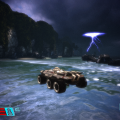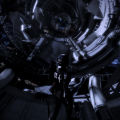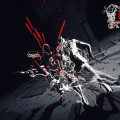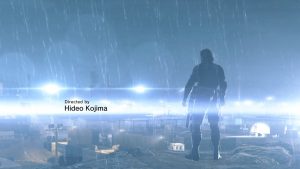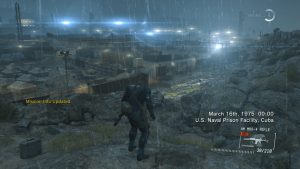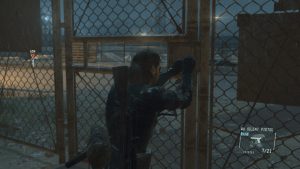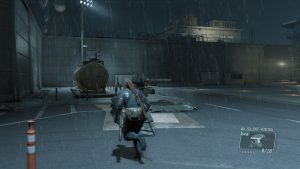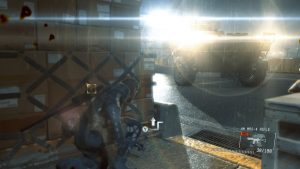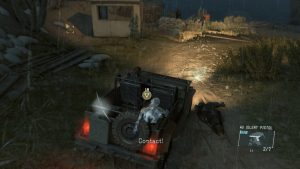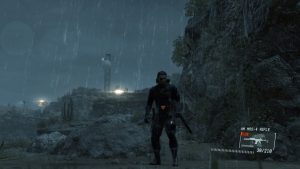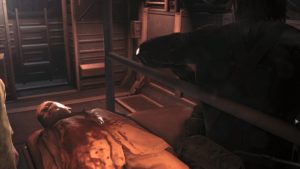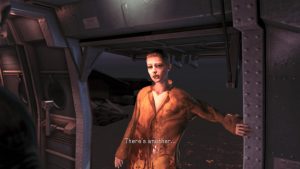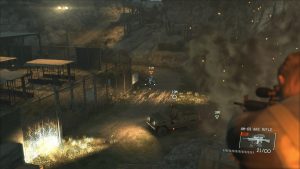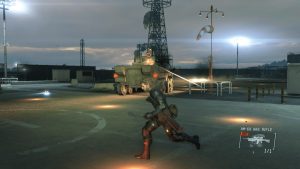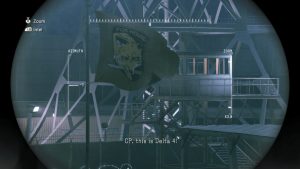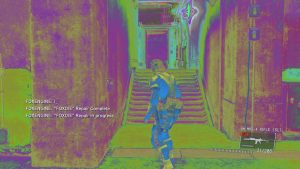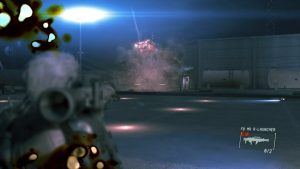- Metal Gear
- Snake’s Revenge
- Metal Gear 2: Solid Snake
- Metal Gear Solid
- Metal Gear Solid Integral Staff Commentary
- Metal Gear Solid (Game Boy Color)
- Metal Gear Solid 2: Sons of Liberty
- Document of Metal Gear Solid 2, The
- Metal Gear Solid: The Twin Snakes
- Metal Gear Solid 3: Snake Eater
- Metal Gear Solid 4: Guns of the Patriots
- Metal Gear Solid: Portable Ops
- Metal Gear Solid: Peace Walker
- Metal Gear Solid V: Ground Zeroes
- Metal Gear Solid V: The Phantom Pain
- Metal Gear Rising: Revengeance
- Metal Gear Touch
- Metal Gear Acid
- Metal Gear Acid 2
- Metal Gear Solid Mobile
“Kept you waiting, huh?”
Metal Gear had evolved, but to what ends? The portable Peace Walker introduced new mechanics, but it wasn’t clear what the next game would look like. Kojima Productions remained quiet, but they were plugging away not only on a new Metal Gear game but on the new technology behind their next couple of games, their work spilling over into other parts of Konami as well. And yet the long period of time it took for any of the studio’s next games to be released created tension between the publisher and its subsidiary. Metal Gear Solid V: Ground Zeroes, released in March 2014, was the beginning of the end for this part of Metal Gear’s history and Kojima Productions.
The first hint of a new Metal Gear was Kojima Productions recruiting new members to make a new entry in the series at GDC 2012, complete with a faux World War 2 era US Army recruitment poster depicting Big Boss as Uncle Sam. The new game was announced to be Metal Gear Solid Ground Zeroes, and given a public debut the same year. It was confirmed to be a prologue to a much larger game that would be called The Phantom Pain. Developed alongside these two new games, Kojima Productions created the FOX Engine, a robust, scalable setup that targeted not only the PS3 and Xbox 360, but the then-unannounced PS4 and Xbox One. Funnily enough, Ground Zeroes wasn’t the first game to use this new engine; that honor went to Pro Evolution Soccer 2014, which released about six months prior.
After the events of Peace Walker, Big Boss and his mercenary force are in a tight spot. Paz & Chico have been kidnapped and Mother Base is about to be inspected for nuclear weapons. Wanting to make sure to wrap up any loose ends, Big Boss goes to Camp Omega, a prison facility on Cuba and outside of US jurisdiction that totally isn’t Guantanamo Bay, and undertakes a one man sneaking mission to rescue both Paz and Chico. Kazuhira ‘Kaz’ Miller once again provides support, with Huey Emmerich back at Mother Base helping to cover up any evidence of nuclear weapons. Arriving at the base, he discovers that it has been taken over by a mysterious military force known as XOF, lead by the even more mysterious antagonist, Skull Face.
The voice cast last seen in Peace Walker is back. Well, save for one minor role… David Hayter is out as Snake, replaced by Kiefer Sutherland of 24 fame. Kojima wanted someone to portray a middle aged man in a restrained and quiet fashion. And certainly when in control of the game, Snake talks very little, amounting to grunts and short sentences most of the time. However, Sutherland has more room to give a solid performance in the cassette tapes found throughout both games. The tapes delve into the back story, and allow the actor to expand on his take on Snake. It’s an awkward choice, but in the end it works, as much as fans might be aghast at the lack of David Hayter. Ideally, the recasting would have gone over better in The Phantom Pain. Explaining why, however, would have been a very obvious tell for two games’ spoilers, presumably something they wanted to avoid.
Despite all the criticism, the writers at Kojima Productions didn’t learn anything from their past mistakes. Ground Zeroes’ story traffics in some garbage narrative choices. The ending of the game involves Paz having two bombs surgically implanted in her stomach and her vagina, including the removal of one in graphic detail, and one of the tapes reveals that Skull Face forced Chico to rape her during torture. It’s grim for the sake of being grim. Big Boss, as a character, lives in a darker story than his progeny, but surely there could have been a more meaningful way to portray this than these low calorie shocks of story beats. Even The Phantom Pain wouldn’t be quite as bleak, while continuing the same dark path.
Ground Zeroes builds upon the mechanics and control of Peace Walker but introduces its own new twist in the form of new design. Camp Omega is small but dense sandbox. Big Boss has free reign to fulfill the mission in whatever manner he sees fit, with his only objective being evacuating the two prisoners. Going in guns blazing is an option, and gun play feels good. Among Snake’s tools is a bullet time-like feature called “Reflex Action.” Whenever Snake is spotted by an enemy, time slows down for a moment, and Snake is able to avoid alert with a well time head shot. It is a cool looking effect, that does make the game much easier, but like Auto Aim in Peace Walker, it can easily be turned off. While it is more action based, sneaking is more than encouraged. Snake can crouch walk, in addition to crawling and standing, damping the sound of his steps, and the rainy setting of the mission also helps cover footsteps. One of the more useful things is Snake’s binoculars. It can mark enemies so that their movements can be tracked in the HUD. Poking around Camp Omega can lead to some interesting finds, and other items can be unlocked through better rankings on successive playthroughs.
The developers added in side-ops, given the main campaign is easily completed in an afternoon. These missions provide some variety from the main campaign. In one mission, a pair of snipers hiding from extradition have to be found matching their face to their pictures. Another mission has the player retrieving a highly valued spy (Hideo Kojima, of course) in an on-rails sequence from the helicopter. In another one, Snake has to take out anti-aircraft guns under a time limit. They even worked in a set of goofy missions. Déjà Vu, originally a PlayStation console exclusive, involves Snake recreating references to the series scattered around Camp Omega, and Jamais Vu, the more action based mission for Microsoft’s consoles, puts Raiden on a search & destroy mission involving body snatched soldiers, featuring some music from Snatcher, in case the reference wasn’t clear. These console exclusive missions were unlocked on all platforms with a patch a few months after release. All of these extra missions are appreciated, if just to have more chances to play around in the sandbox.
Ground Zeroes shows off the FOX Engine’s features. With the rainy night setting, surfaces have an authentically wet sheen to them and droplets form convincingly on characters and the camera. Lens flares and bloom are everywhere, which is certainly a choice. Reflex mode affects the rain drops in the air, leaving them suspended as you aim. Characters now have even more detail than before, with impeccable motion capture, and enemies react realistically to gunshots in different parts of the body. The side-ops missions show Camp Omega at different times of day and with different weather, teasing the tech that The Phantom Pain would feature in its open world. Despite being released for two console generations, the PS3 and Xbox 360 versions held up well against their next-generation brethren, a testament to the engine’s scalability. Harry Gregson-Williams returns to the series, but Ludvig Forssell also provides the soundtrack this time. The veteran composer brings a strong, stirring backing to Big Boss’ mission. ‘Here’s To You’ shows up again as a theme, but unlike earlier, it’s the original version, not a cover.
Ground Zeroes is a perfect vertical slice of the game that followed, building on the changes that Peace Walker started. Perception at release was that it was an overpriced demo, but that sells the game short. In isolation, the short running time of Ground Zeroes, coupled with the dense setting and open design, encourages exploration and experimentation, especially with the added side-ops missions. It’s a much simpler game than The Phantom Pain, but that’s to its benefit. Ground Zeroes feels like the culmination to the realism that the designers of the original Metal Gear Solid pursued all those years ago – an intimate setting, fantastic technology, and compelling characters – only now with a modern sandbox twist.
